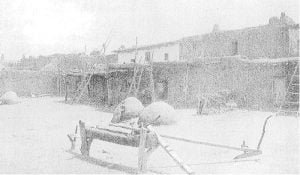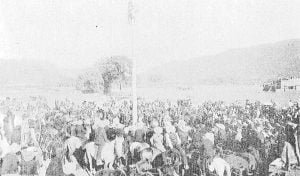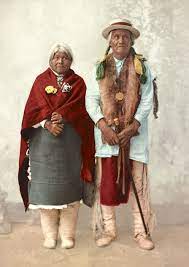Tesuque Pueblo
One approaches Tesuque, situated on the left bank of the river of that name, over a road winding through small orchards fenced by an abatis of cedar boughs driven into the ground, while apple and peach trees tangle their branches overhead. Small patches of wheat and corn lie on either side of the road. The village is built about a quadrangle 240 feet long by 150 feet broad. The houses are mostly of 2 stories. The Catholic Church is small and in a neglected condition. Methods of farming are crude. Both wooden and steel plows are used. Corn is planted … Read more




